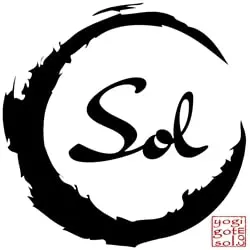What is Yoga?
Yoga is a profound philosophical system developed in the Himalayan Mountain range. Yoga emphasizes the union of body, mind, and spirit. Before religions were formed, in the way we know religiosity today, yoga was a system of rituals, a technology based on the philosophy of Yoga. The great sage, Patāñjali, articulated the practice in 196 verses known as the Yoga-Sutras. A Sutra is a thread, and Patāñjali’s wisdom was first shared verbally, woven together like lines of a poem and recited much-like a song. Eventually, the sutras were written and shared, codifying among many the depth of yoga is an eightfold path (Ashtanga) to achieve harmony.
Ethical Discipline: – Yogas principles for moral integrity and harmonious living:
The Five Yamas (Constraints), The Great Vow of Yogis:
- Ahimsā (Non-violence) – Avoid harming others through thoughts, words, or actions.
- Sātya (Truthfulness) – Speaking & living with integrity.
- Asteyā (Non-stealing) – Respecting others’ belongings & time.
- Brāhmacharya (A Monk’s Life) – Learning self-control & moderation.
- Aparigrāha (Non-possessiveness) – Letting go of material attachment.
The Five Niyamas (Personal Restraints) – Practice of personal growth:
- Śaucha (Purity) – Maintaining a clean body, mind & environment.
- Santośa (Contentment) – Finding peace & gratitude in the present.
- Tāpas (Self-discipline) – Cultivating inner strength through austerity.
- Svadhyāya (Self-study) – Reflecting on ancient teaching.
- Isvāra-Prānidhāna (Surrender to a spiritual power) – Trusting in the divine or universal flow.
Sādhana Pāda (practice steps)
These ethics form the foundation, the first two of the eight limbs of yoga philosophy. These, combined with the next three form the Sādhana Pāda (practice steps). Sādhana is a a daily ritual, or a focused, committed practice that cultivates and refines the mind & body. Patāñjali begins this chapter by explaining that connection to the physical form is the primary source of suffering – ignoring our true nature. These steps progress to the last three steps of the path.
3. Asana (Physical Postures) – Though often seen as mere exercise today, postures were originally designed to prepare the body for meditation.
4. Pranayama (Breath Control) – Breath regulation enhances energy flow and mental clarity.
5. Prātyahāra (Withdrawal of Senses) – Turning inward by detaching from external distractions fosters introspection.
Vibhuti Pada (Progressing steps)
The last three steps, Vibhuti Pada (Progressing steps), enable the yogi to receive deeper knowledge of qualities of the object. Combined, these three steps form Samyāma. This term summarizes wholeness, or complete absorption with the object of meditation. It is an important mark of Patāñjali’s genius that the previous step requires the yogi to surrender connections with the physical.
“The essence of physical objects is only to serve as the field to pure consciousness. Once the lesson is learned, then the objects exist only for those who have yet to learn.” (2.21-22)
The yogi must learn from the physical form in order to see the ego. Then, once observed, the yogi can be liberated from the misperception created by ego; transforming purpose (svadharma) from the ego’s self-preservation to the spirit’s selfless service.
6. Dharana (Concentration) – Focused attention on a single point.
7. Dhyana (Meditation) – A deep meditative state that cultivates awareness & inner stillness.
8. Samadhi (Complete Unity) – Realization of oneness with everything in the universe. This is the ultimate expression of grace and atonement.
These elements integrate mindfulness, self-discipline, and spiritual growth, making yoga a timeless path to self-mastery and inner peace. Overcoming ego-based behaviors and negative energy is essential for spiritual awakening. Together, each step offers complementary understanding how our beliefs, perceptions, and energy influence our reality.
Tat tvam asi. (That thou art)
The practice of Sol Hot Yoga puts the philosophy into action. Understanding the concept of grace is central to the practice; undoing the illusion of separation. By embracing forgiveness and letting go of the ego’s judgments, one reverses the mistaken belief in separation. This process of inner healing restores our innate wholeness, aligning us with divine love and unity.














